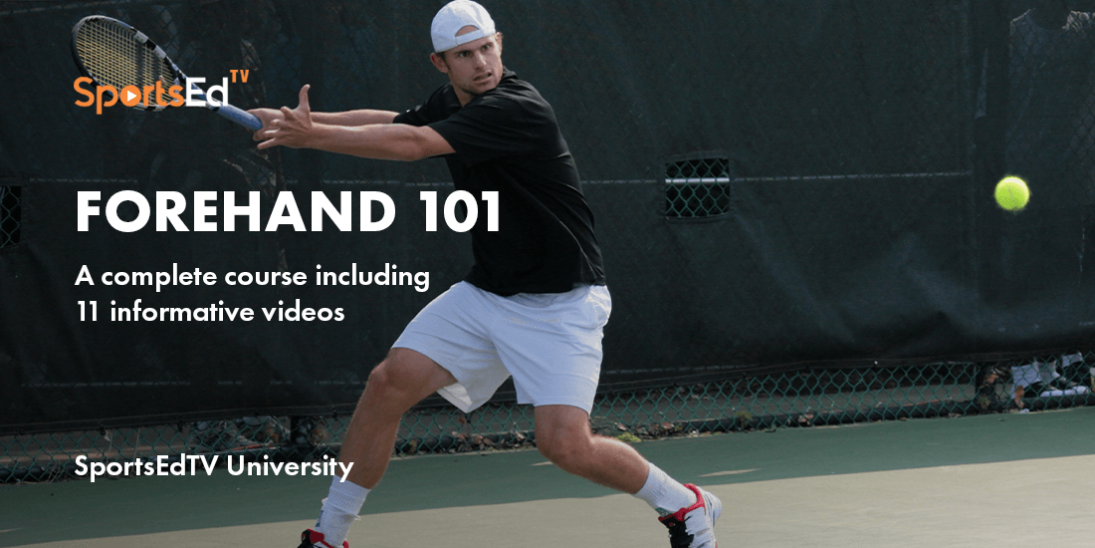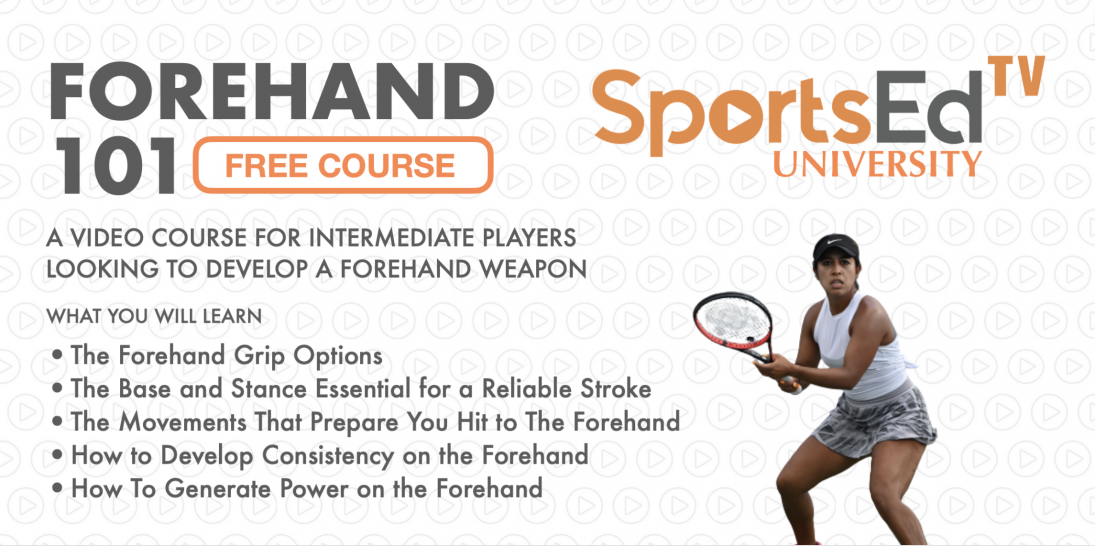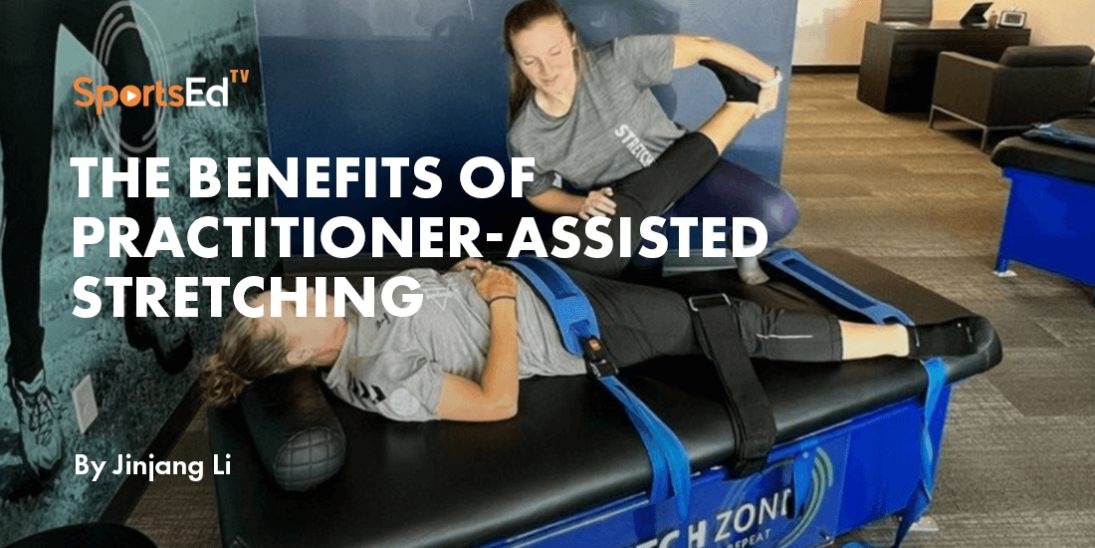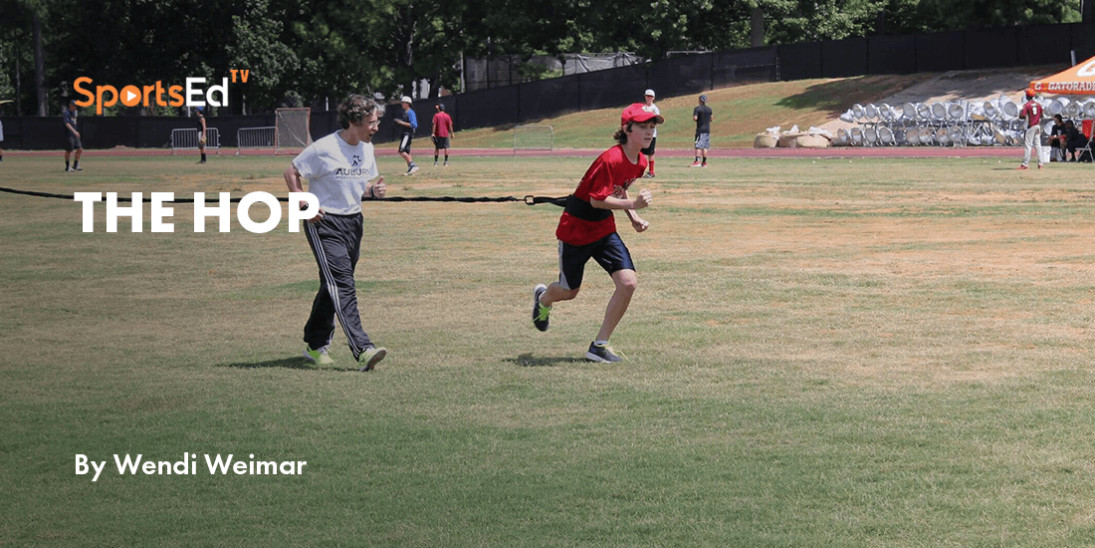Tennis
Welcome and thanks for visiting...

Tennis Forehand 101: How to Hit a Forehand in Tennis


The Tennis Forehand 101 course teaches the fundamentals Federer, Nadal, and Djokovic use to hit great forehands, starting with a strong base, moving through the synchronization of the upper and lower body, the basic movements out of the base, the use of the wrist, getting to contact and the wrap-around finish with full rotation. All levels will benefit from this course on the most important shot in tennis.
What is a forehand stroke in tennis?
A forehand is a shot hit on the side of the body of the hand in which you hold the racquet (dominant side). Imagine that you are hitting the ball with the palm of your hitting hand. The forehand stroke is when the ball bounces before the player hits the ball with the dominant side and swings the tennis racquet across the body.
How to hit a forehand in tennis?
The Forehand technique is explained in seven steps:
- Tennis forehand grip
- Tennis-ready position for forehand, now called the Base
- Tennis preparation to hit the ball
- Tennis racquet preparation
- Contact point
- Finishing the shot - the follow-through
- Recovery after the shot
Step 1: The Tennis Forehand Grip: How to hold a tennis racket forehand?
It all starts with the grip. Most top players today hit with a semi-western forehand grip. The technique taught in the course can be used with an eastern, semi-western or western grip. All of these grips allow you to easily use a relaxed wrist to rip through the ball, shaping it with spin to control the shot.
Learn more about the different forehand grips here: What your forehand grip means for shot depth and point of contact
Step 2: The Base and Tennis Ready Position for Forehand
Effective, consistent forehands require early preparation. In previous decades, players were told to “take the racket back” while turning sideways. Because the game has evolved to be so much faster, today’s preparation happens while facing the net, beginning with having the proper BASE.
This video explains how to create a strong base or ready position. A strong base is created by having the right amount of space between the legs, the proper knee flex, and optimal balance to ensure that the right muscles are engaged from quick movement in any direction.
Step 3: Preparing to Hit The Ball
While facing the ball, you want to get your hands up - like your going to catch the ball, and LEAN, LOAD (on the outside leg) &; LEVERAGE (with inside foot and leg). This is the beginning of what some coaches will call the UNIT TURN, where the upper and lower body are working together as ONE UNIT.
Step 4: Racquet Preparation
As you LEAN, LOAD &; LEVERAGE with the lower body, you lift and COILING the racquet at shoulder height (guiding the racquet with the left or non-hitting hand). This move also creates the shoulder turn required to rotate the body back through the shot.
Step 5: Contact Point
What is tennis forehand contact point and how to find it?
This is a common question amount, beginners and intermediate tennis players. The contact point is the key to executing the forehand consistently.
Many forehands are made or missed because the player contacted the ball at the right time or not. Swinging from the coiled racquet position will allow you to create racquet head speed, get to contact with the proper racquet head position, and effortlessly follow through to finish the shot. KEY: Make contact with an open stance first, and rotate the outside foot at contact. This will give you the feel of rotating the body through the shot and will help you get to contact early enough. Then, you can move to the semi-open and closed stances once you have a good feel for the contact point.
Step 6: Finishing The Shot - The Follow-Through
After making contact with the ball, you must continue swinging through the shot, rotating the body through (not moving forward and through the ball, which is a common misconception, but rotating the body and racquet around the ball) so that your weight finishes on the opposite foot. The position of the tennis racquet after the shot will often depend on the height of the ball when it was struck.
Step 7: Recovery After The Shot
Your job is almost complete after the follow-through. Unless you have hit an unreturnable shot, you’ll have to recover and get ready for the next shot. This is a common mistake of players transitioning from the intermediate to advanced levels of play. The body rotation learned in point #6 will help you recover effectively.
Tennis Tips and Tennis Forehand Drills to Speed Up Your Improvement
How to improve your forehand in tennis?
Once you understand the basic technique to improve your forehand, you need to practice. Nothing will give you a reliable stroke like repetition of the proper technique (and nothing will ruin your stroke like repetition of a flawed technique). Here are some additional tips and drills to help you make that forehand a weapon in your tennis arsenal.
One Minute Tip - Lift at Contact for Great Forehands
ONE-MINUTE TIP - LIFT AT CONTACT FOR GREAT FOREHANDS. SportsEdTV Director of Tennis, John Eagleton, shows a great tip for improving the consistency and depth of your forehand. Start by standing close to the net in your base. With your hands up, feed yourself a ball and roll it over the net, lifting at contact with your trigger finger. Make sure you are finding the contact point with the arm fully extended. Work on your spacing. Rotate fully on your finish. Hit a few, then move back a couple of steps and repeat. As you move back, practice lifting at contact to shape the ball (create topspin) and make sure you are hitting the ball deep into the court. Feel the ball rotating off your racquet strings. Practice this drill until you get the same feeling and results rallying with your practice partner or opponent.
Forehand Overview Part 7-Linear vs. Rotational Power
In this video, SportsEdTV Director of Tennis, John Eagleton, describes the difference between linear and rotational power on the forehand. Linear power, which has been used by players for decades, simply means getting the racquet behind the ball and driving through it like you are hitting through five balls. Linear refers to turning sideways and getting your weight through the shot by transferring the weight in a straight line from the back to the front foot. Because of the speed in today's game, and the different heights at which a player must strike the ball, linear power technique makes strokes hard to repeat without a lot of time consuming little steps taken to position the body perfectly between shots. As you can see by watching the pros, time between shots is scarce, so most top players use rotational power, which is created by rotating the body while facing the net and creating force by rotating the racquet around the body. This preparation and resulting rotation can be done quickly and creates incredible racquet head speed and spin on the ball. This technique, which is a cornerstone of today's game, helps players operate effectively at high speeds, adjust to different hitting zones quickly, and create a variety of shapes (trajectories) on the ball. This is video seven in a seven-video series that breaks down the forehand fundamentals for today's game.
Forehand Progression 1 - Feel &; Roll
FOREHAND PROGRESSION 1 - FEEL & ROLL. In Forehand Progression 1, you will learn the proper use of the hand and wrist to “lift & roll” and create topspin when hitting this all-important stroke. This skill, which creates the “windshield wiper” action and thin ball contact, is a must-have for players of all levels.
Forehand Progression 4 - The Swivel Turn
FOREHAND PROGRESSION 4 - THE SWIVEL TURN. In Forehand Progression 4, learn to use a swivel office chair to train your body to feel the different levels of rotation possible for the stroke, while also learning how the upper and lower body functions together on this all important shot. This innovative training method has helped thousands of people improve their groundstrokes.
Whether you are trying to learn or even teach tennis SportsEdTV's library of cinema-quality online instructional videos will become a most valuable resource to you. These tennis instructions are led by leading coaches, players, and champions. Athletes new to tennis will appreciate the simplicity and special effects employed by SportsEdTV coaches who will offer expertise in fundamentals, strategies and drills for all levels of tennis in formats that are easily understood and practiced. This instructional video content is available to anyone in the world with an internet connection. SportsEdTV videos feature advice from world-class tennisl coaches and athletes - many of whom are or have coached world-champions. For more tennis lessons, visit our world-class video library. And don't miss SportsEdTV's thoughtful tennis blogs featuring contributions by world-famous coaches and players. Please leave your comments below and share SportsEdTV with your friends, family, and teammates.







